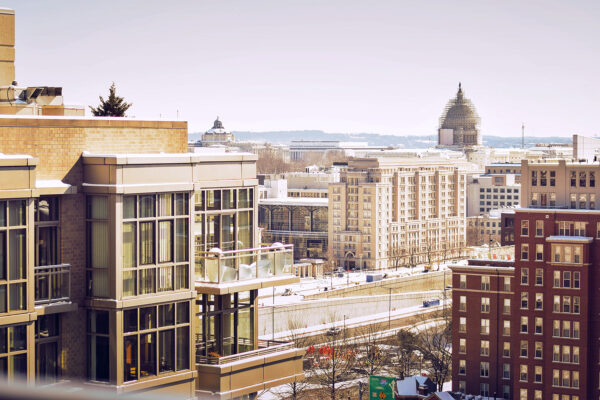
- Americans vote in midterm elections on Tuesday, November 6.
- All 435 seats in the House of Representatives, 35 of the 100 seats in the Senate and 39 state and territorial governorships are contested. Many states also hold legislative elections.
Read the Atlantic Sentinel for a transatlantic perspective on the midterm elections in the United States.

Comments are automatically closed after one year.
What should be the priorities for the Democrats if they win the House?
Thank you for your comment!
I think in terms of policy, Democrats must be focused on arresting the decline of the American middle class. Whether it is about wages, higher education, health care or pensions, a lot of risk has been shifted from companies and government in recent decades to individual Americans and their families. That’s the reason life feels so precarious for so many Americans who otherwise have a decent income.
Talking Points Memo also had a good feature about this a few days ago and I’ve argued in the past that middle-income Americans need a new deal.
Universal health care, a higher minimum wage and Elizabeth Warren’s proposals on corporate governance fit into this.
Politically, I would expect a focus on the corruption of the Trump Administration, cruel immigration policies and Russian interference in the 2016 election. Those issue are more divisive, but a) they fall within Congress’ proper oversight role and b) they could help Democrats make a Trump reelection in 2020 less likely. Which is after all what they need to do if they want to have a chance at implementing any of the policies I mentioned previously.
Will the youth vote help swing these mid-terms for the Democrats or is the idea of a surge in the 16-29 age bracket turning out overstated?
It does seem young people are more likely to vote this year than in a regular off-year election, but it’s hard to say.
That also makes it difficult for pollsters. If we see a bigger “blue wave” than anticipated, higher-than-expected youth turnout may be the reason.
Here is some disappointing news on that topic: only a third of millennials say they will definitively vote.
One would think that with the synagogue killings, bombs sent to Trump critiques and former presidents, and the two Blacks killed in Louisville, the Democrats are at least a shoe-in for the House. It will be a surprise if the Repubs sneak by. Two things to also keep in mind: Trump was not welcomed to Pittsburgh nor was he invited to John McCain’s funeral; so what does that tell one?
There is definitely a sense that Trump has been fighting hard in these final few weeks. Many Presidents at this stage would crave the current economic position of record low unemployment and high GDP growth. Yet, for Trump he is paying little attention to this. He is returning to what worked for him last time, firing up the base with a focus on immigration and the impending ‘threat’ of the migrant caravan heading to the southern border. It may seem counterintuitive, but Trump knows what gets his Republican core to turn out and that’s who he is speaking to.
Looks like it, but the flip side of that is that it doesn’t expand the Republican coalition.
As Ross Douthat argues in The New York Times today, imagine Trump would talk about the economy — “Imagine that he followed through on Steve Bannon’s boasts about a big infrastructure bill instead of trying for Obamacare repeal; imagine that he listened to Marco Rubio and his daughter and tilted his tax cut more toward middle-class families; imagine that he spent more time bullying Silicon Valley into inshoring factory jobs than whining about Fake News; imagine that he made lower Medicare drug prices a signature issue rather than a last-minute pre-election gambit” — then Democrats could have been in real trouble.
As it is, Trump has the loyalty of his base, but Democrats are energized and appealing to voters in the middle.